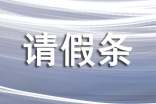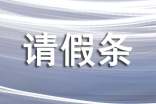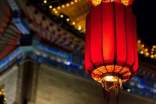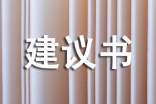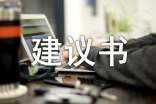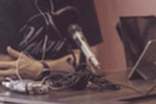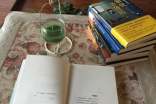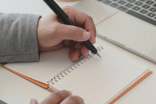篇一:《英语作文–中西医的比较》
Traditional Chinese Medicine and Western Medicine
As living standards improving,more and more attention has been paid for human health including both physical condition and psychological status.When there are some problems with our body,we have to go to the hospital for help.The purpose of this essay is to contrast the differences between western medicine instead of traditional Chinese medicine.The three main differences are awareness,diagnosis and therapy.
The most notable difference between these two kinds of medicines is their awareness of human disease and health.Western medicine,a medical system based on the pathological anatomy basis,considers that pathological changes of organs lead to disease,which has been developed from organization organ to cells,molecules,or even DNA level.On the contrary,traditional Chinese medicine,a kind of evidence-based medicine,suggests that diseases are caused by inharmony between human body and the environment or their disequilibrium between internal organs.
Contrasting both types of medicines we notice another difference,the diagnostic method.western medicine diagnosis takes advantage of the advanced medical equipment and laboratory to make accurate diagnosis of disease,which contain the main five approaches of interrogation,physical
inspection,electrocardiography and examination,laboratory medical imaging
examination.Whereas,traditional Chinese medicine supports the methods of syndrome differentiation and treatment,which draw the conclusion about body problems by look,smell,ask,cut.
Yet another difference between these two types of medicines is therapies.As western medicine, the treatment object is disease and its goal is to vanish disease.The main treatment methods include medicine,surgery,laser treatment,and chemotherapy.Nevertheless,as to traditional Chinese medicine,the treatment object is people and its goal is to cure patients. There are various treatment methods ,such as internal drugs,external application,acupuncturists,cupping,chiropraxis,and so on. In conclusion,western medicine and traditional Chinese medicine have three mian differences.As we can see,in our country,instead of traditional Chinese medicine,western medicine has been widely accepted by people because of its fast onset.However,I think either of these two selected by us should depend on our physical condition.
篇二:《传统中药与西药对比的英文论文》
What is the major difference between
traditional Chinese medicine and
Western medicine?
【Abstract】 Because of the globalization, the comparison between traditional Chinese medicine(TCM) and western medicine have been attracted far more attentions than before. As one of the aspects of intercultural communication, this paper focuses on two major points, i.e. the different two concepts, the treatments or their prescriptions. They will be given a brief introduction in this paper so that after reading this paper people in different cultural backgrounds will know more about the difference between traditional Chinese medicine and Western medicine and be more convenient to communicate.
【Key words】Concepts Treatments Prescriptions Attitudes Communication Different cultural backgrounds
1. Differences between Two Concepts
From this table, we may get some explanations of why are traditional Chinese and westerners so different to treat disease.
1.1 The Concepts of Traditional Chinese Medicine
In general, disease is perceived as a disharmony (or imbalance) in the functions or interactions of yin, yang, qi, xuĕ, zàng-fǔ, meridians etc, or of the interaction between the human body and the environment.[1]
Therapy is based on which "pattern of disharmony" can be identified. Thus,
"pattern discrimination" is the most important step in TCM diagnosis. It is also known to be the most difficult aspect of practicing TCM. In order to determine which pattern is at hand, practitioners will examine things like the color and shape of the tongue, the relative strength of pulse-points, the smell of the breath, the quality of breathing or the sound of the voice. [2] For example, depending on tongue and pulse conditions, a TCM practitioner might diagnose bleeding from the mouth and nose as: "Liver fire rushes upwards and scorches the Lung, injuring the blood vessels and giving rise to reckless pouring of blood from the mouth and nose."[3] He might then go on to prescribe treatments designed to clear heat or supplement the lung.
1.2 The Concepts of Western Medicine
In western medicine, the clinical practice is thought highly of. Doctors personally assess patients in order to diagnose, treat, and prevent disease using clinical judgment.
The doctor-patient relationship typically begins an interaction with an examination of the patient's medical history and medical record, followed a medical interview[4] and a physical examination. Basic diagnostic medical devices (e.g. stethoscope, tongue depressor) are typically used. After examination for signs and interviewing for symptoms, the doctor may order medical tests (e.g. blood tests), take a biopsy, or prescribe pharmaceutical drugs or other therapies. Differential diagnosis methods help to rule out conditions based on the information provided. During the encounter, properly informing the patient of all relevant facts is an important part of the relationship and the development of trust. The medical encounter is then documented in the medical record, which is a legal document in many jurisdictions.[5]
2. Therapies of Traditional Chinese and Western Medicine
Referring to these concepts, I will put my emphases on two primary roots as follows, which have comparatively reflected two different therapies.
2.1 Therapy of Traditional Chinese
The traditional Chinese medicine thought most diseases are aroused by “Six
Excesses”(六淫, pinyin: liù yín, sometimes also translated as "Pathogenic Factors", or "Six Pernicious Influences"; with the alternative term of 六邪, pinyin: liù xié, – "Six Evils" or "Six Devils") are allegorical terms used to describe disharmony patterns displaying certain typical symptoms.[6] These symptoms resemble the effects of six climatic factors. In the allegory, these symptoms can occur because one or more of
those climatic factors (called 六气, pinyin: liù qì, "the six qi") were able to invade the body surface and to proceed to the interior. This is sometimes used to draw causal relationships (i.e., prior exposure to wind/cold/etc. is identified as the cause of a
disease), while other authors explicitly deny a direct cause-effect relationship between weather conditions and disease, pointing out that the Six Excesses are primarily descriptions of a certain combination of symptoms translated into a pattern of
disharmony.[7]
It is undisputed, though, that the Six Excesses can manifest inside the body without an external cause. In this case, they might be denoted "internal", e.g.,
"internal wind" or "internal fire (or heat)".
The Six Excesses and their characteristic clinical signs are:{中药和西药对比英语作文}.
1. Wind (风, pinyin: fēng): Rapid onset of symptoms, wandering location of
symptoms, itching, nasal congestion, "floating" pulse; tremor, paralysis,
convulsion.
2. Cold (寒, pinyin: hàn): Cold sensations, aversion to cold, relief of symptoms
by warmth, watery/clear excreta, severe pain, abdominal pain,
3.
4.{中药和西药对比英语作文}.
5.
6. contracture/hypertonicity of muscles, (slimy) white tongue fur, "deep"/"hidden" or "string-like" pulse, or slow pulse. Fire/Heat (火, pinyin: huǒ): Aversion to heat, high fever, thirst, concentrated urine, red face, red tongue, yellow tongue fur, rapid pulse. (Fire and heat are basically seen to be the same) Dampness (湿, pinyin: shī): Sensation of heaviness, sensation of fullness, symptoms of Spleen dysfunction, greasy tongue fur, "slippery" pulse. Dryness (燥, pinyin: zaò): Dry cough, dry mouth, dry throat, dry lips, nosebleeds, dry skin, dry stools. Summerheat (暑, pinyin: shǔ): Either heat or mixed damp-heat symptoms.
According these six excesses, Chinese not only have herbals to treat these diseases, but also have practical treatments, such as acupuncture and moxibustion, Tui na, and Qigong. And also they have cupping(拔罐), GuaSha, and Die-da. Acupuncture means insertion of needles into superficial structures of the body (skin, subcutaneous tissue, muscles) – usually at acupuncture points (acupoints) – and their subsequent
manipulation; this aims at influencing the flow of qi.[8] According to TCM it relieves pain and treats (and prevents) various diseases.[9]
Acupuncture is often accompanied by moxibustion – the Chinese characters for acupuncture Chinese: 针灸; pinyin: zhēnjiǔ literally meaning{中药和西药对比英语作文}.
"acupuncture-moxibustion" – which involves burning mugwort on or near the skin at an acupuncture point. There are three methods of moxibustion: Direct scarring, direct non-scarring, and indirect moxibustion. Direct scarring moxibustion places a small cone of mugwort on the skin at an acupuncture point and burns it until the skin{中药和西药对比英语作文}.
blisters, which then scars after it heals. Direct non-scarring moxibustion removes the burning mugwort before the skin burns enough to scar, unless the burning mugwort is left on the skin too long. Indirect moxibustion holds a cigar made of mugwort near the acupuncture point to heat the skin, or holds it on an acupuncture needle inserted in the skin to heat the needle.[10]
In electroacupuncture, an electrical current is applied to the needles once they are inserted, in order to further stimulate the respective acupuncture points.
Tui na (推拿) is a form of massage akin to acupressure (from which shiatsu
evolved). Oriental massage is typically administered with the patient fully clothed, without the application of grease or oils. Choreography often involves thumb presses, rubbing, percussion, and stretches.
Qigong (气功 or 氣功) is coordinated breathing, movement, and awareness used for exercise, healing, and mediation. Traditional Chinese medicine practioners believe that qìgōng (气功/氣功) and related practices prevent, heal, and treat diseases.{中药和西药对比英语作文}.
2.1.1 The Prescriptions of TCM
Raw materials
There are roughly 13,000 medicines used in China and over 100,000 medicinal recipes recorded in the ancient literature. Plant elements and extracts are by far the
most common elements used. n the classic Handbook of Traditional Drugs from 1941, 517 drugs were listed – out of these, 45 were animal parts, and 30 were minerals. Animal substances{中药和西药对比英语作文}.
Some animal parts used as medicines can be considered rather strange such as cows' gallstones. Some can include the parts of endangered species, including tiger penis and rhinoceros horn. The black market in rhinoceros horn reduced the world's rhino population by more than 90 percent over the past 40 years. Concerns have also arisen over the use of turtle plastron and seahorses. In general, Chinese traditional medicine emphasizes the penis of animals as therapeutic. Snake oil, which is used traditionally for joint pain as a liniment, is the most widely known Chinese medicine in the west, due to extensive marketing in the west in the late 1800s and early 1900s, and wild claims of its efficacy to treat many maladies; however, there is no clinical evidence that it is effective. Since TCM recognizes bear bile as a medicinal, more than 12,000 asiatic black bears are held in "bear farms", where they suffer cruel conditions while being held in tiny cages. The bile is extracted through a permanent hole in the
abdomen leading to the gall bladder, which can cause severe pain; the bears are known to regularly try to kill themselves.
Human body parts
Traditional Chinese Medicine also includes some human parts: the classic Materia medica (Bencao Gangmu) describes the use of 35 human body parts and excreta in
medicines, including bones, fingernail, hairs, dandruff, earwax, impurities on the teeth, feces, urine, sweat, organs, but most are no longer in use.[11] [12]
2.2 Therapy of Western Medicine
Within medical circles, specialities usually fit into one of two broad categories: "Medicine" and "Surgery." "Medicine" refers to the practice of non-operative
medicine, and most subspecialties in this area require preliminary training in "Internal Medicine". In the UK, this would traditionally have been evidenced by obtaining the MRCP (An exam allowing Membership of the Royal College of Physicians or the
equivalent college in Scotland or Ireland). "Surgery" refers to the practice of operative medicine, and most subspecialties in this area require preliminary training in "General Surgery." (In the UK: Membership of the Royal College of Surgeons of England (MRCS).)
During the medical care, the provision of it is classified into primary, secondary, and tertiary care categories. Primary medical services are provided by physicians, physician assistants, nurse practitioners, or other health professionals who have first contact with a patient seeking medical treatment or care. These occur in physician
offices, clinics, nursing homes, schools, home visits, and other places close to patients. About 90% of medical visits can be treated by the primary care provider. These
include treatment of acute and chronic illnesses, preventive care and health education for all ages and both sexes. Secondary medical services are provided by medical specialists in their offices or clinics or at local community hospitals for a patient referred by a primary care provider who first diagnosed or treated the patient.
Referrals are made for those patients who required the expertise or procedures
performed by specialists. These include both ambulatory care and inpatient services, emergency rooms, intensive care medicine, surgery services, physical therapy, labor and delivery, endoscopy units, diagnostic laboratory and medical imaging services, hospice centers, etc. Some primary care providers may also take care of hospitalized patients and deliver babies in a secondary care setting. Tertiary medical services are provided by specialist hospitals or regional centers equipped with diagnostic and treatment facilities not generally available at local hospitals. These include trauma
centers, burn treatment centers, advanced neonatology unit services, organ transplants, high-risk pregnancy, radiation oncology, etc.Modern medical care also depends on information – still delivered in many health care settings on paper records, but
increasingly nowadays by electronic means. At the end of the treatment, doctors always give patients some pills which should been had regularly.
2.2.1 The Prescriptions of Western Medicine
A medication or medicine is a drug taken to cure and ameliorate any symptoms of an illness or medical condition, or may be used as preventive medicine that has future benefits but does not treat any existing or pre-existing diseases or symptoms.
Dispensing of medication is often regulated by governments into three
categories—over-the-counter (OTC) medications, which are available in pharmacies and supermarkets without special restrictions, behind-the-counter (BTC), which are dispensed by a pharmacist without needing a doctor's prescription, and Prescription only medicines (POM), which must be prescribed by a licensed medical professional, usually a physician.[citation needed]
篇三:《中西药对比》
西药、中成药、新型中药产品对比
篇四:《中药与西药》
论文作业
题目:面临西药,中药的优势及不足
系别:药学院 专业:中药学
学生姓名:张正兴
学号:512050801410
目录:
绪论
一、西药和中药的了解及概念
二、中西药研发
三、中药西药合理配伍
四、中药现状及需要注意问题
五、天然药
六、中药的优势
七、例举中药患者极其医治情况
面临西药,中药的优势及不足
绪论:
近些年来,国内外的医药学工作者,对中药给予了更多的重视。其中突出的原因和论据,则在于中药是天然产物。国内的一些学者,更进一步引伸认为,国际上,人类正有“重归自然”的趋势,故从中药是天然产物的角度,加以强调中药的优势和重要性。那么,中药优势的根本,是在于其是天然产物?还是在于其是中医药学理论体系的药物,即优势的根本在于理论体系?确是很值得讨论和明确的间题。
同时先应该对中药和西药概念的内涵,应有确认理解。中药和西药是相应医药学理论体系内的概念,其内涵决非是以人工合成和天然产物来划分。为了阐述中药优势的根本所在,明确中药和西药概念内涵,是完全必要的。何谓中药,何谓西药,也就是说,一个药物具备哪些基本内容,才能称作中药或西药。中药,是中医药学理论体系内的概念;西药,是西医药学理论体系内的概念。其概念内涵,即所应具备的基本内容,应当与各自的医药学理论体系相适应。应当指出的是,一个药物具备中药或西药的基本内容后,并且只有按相应内容,考虑其应用时,才称作相应药物。因为有些中药或西药,是可同时具备中药和西药的基本内容,那么,则可称其为中药或西药,例如冰片、西洋参、大黄等。从中药和西药的概念内涵,很明显见到,药物到底是人工合成产物还是天然产物,并不是作为区分中药和西药的标志。客观上,不论中药或西药,都有人工合成产物和天然产物。故把中药仅与天然产物相关联,西药仅与人工合成产物相关联,是不符合客观情况的。
一、西药和中药的了解及概念
1、西药
西药应具备如下三点内容:(1)药物本身性能,以其物理和化学性质表述,如固体或液体、酸性或碱性、溶解度、颜色等;(2)药物功效以现代科学的生理、生化、病理等指标表述,如升高血压、降低血糖、抑制细菌、降低心肌耗氧量等;(3)药物配合使用时,强调各个药物作用的针对性,一般不做为一个功效整体来考虑和应用,施治于人,起到防治疾病的作用。一个药物具备如上基本内容,则能按西医药学理论使用,可称作西药。
2、中药
中药应具如下三点基本内容:(l)药物本身性能,以特殊方式表述,包括性味、归经、升降浮沉等;(2)药物功效以中医药学术语表述,如清热、壮阳、活血化癖、舒肝理气、治胆虚不眠、治肺热咳嗽等。(3)药物配合使用时,各药主次关系明确,即君臣佐使关系等,使配合使用的药物共同构成一个功效整体,即复方中药,施治于人,起到防治疾病的作用。当然,组方时,还应考虑药物间的反畏关系及药对的使用等。一个药物具备如上基本内容,则能按中医药学理论使用,可称作中药。中药大多为天然药, 一种药中常含多种成分。中药是在中医理论指导下, 具有独特的理论体系和应用形式。中医学有两个基本特点: 一是整体观念; 二是辨证论治。中药仅古籍记载就有 3 000 种以上, 发展至今已达 18 000 余种。中药的应用包括配伍、用药禁忌、剂量和用法等内容。炮制是中医用药的一大特点: 中药由于成分复杂, 常常一药多
效, 但中医治病往往不是利用药物的所有作用, 而是根据病情有所选择,需要经炮制对药物原有性能予以取舍, 权衡损益, 使某些作用突出, 某些作用减弱, 力求符合疾病的实际治疗要求。如用何首乌补肝肾、填精血时, 就需将生首乌制成熟首乌, 以免滑泻作用伤及脾胃, 导致未补其虚先伤其正; 又如伤寒病因开始是感受的寒邪, 寒邪容易损阳, 也易伤中, 所以立方用药都要注意保存阳气和顾护脾胃。张仲景治伤寒传经热邪的白虎汤、调胃承气汤, 尽管为清泻剂, 甘草却要求炙用, 因方中甘草的目的不是清热泻火而是为了顾护脾胃, 防止石膏、知母或大黄、芒硝大寒伤中。苍术温燥之性甚强, 虽能燥湿运脾,但服过于温燥之品, 容易伤胃阴, 助胃热, 顾此失彼。苍术制后燥性缓和, 且有焦香气, 健运脾土的作用增强, 就能达到慢病缓治的用药要求; 川乌、草乌加热煮制后其毒性显著降低,保证了临床用药安全有效; 紫菀生用虽然化痰作用较强, 但能泻肺气, 若肺气不足的患者服用后, 有的可出现小便失禁,尤其是小儿, 用甘温益气的蜂蜜炼制后可纠此弊, 并增强润肺之功能。
二、中西药研发
从天然产物的中药研制新西药是可以理解的新西药研制途径,但就此而认为中药优势的根本所在为天然产物,实在是一种误解。近二三十年来,在人类生活的诸多方面,例如食品的色素、防腐剂、矫味剂,纺织品,农药,化肥,动植物生长促进剂,化装品,医药品等,大量使用了人工合成产物。此举,为人类生活的改善,起到了很大
版权声明
本站文章收集于互联网,仅代表原作者观点,不代表本站立场,文章仅供学习观摩,请勿用于任何商业用途。
如有侵权请联系邮箱tuxing@rediffmail.com,我们将及时处理。本文地址:https://www.wuliandi.com/chuzhong/cyzw/226867.html

